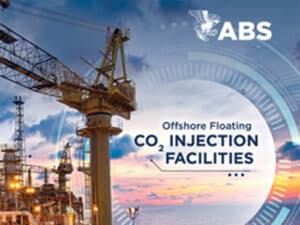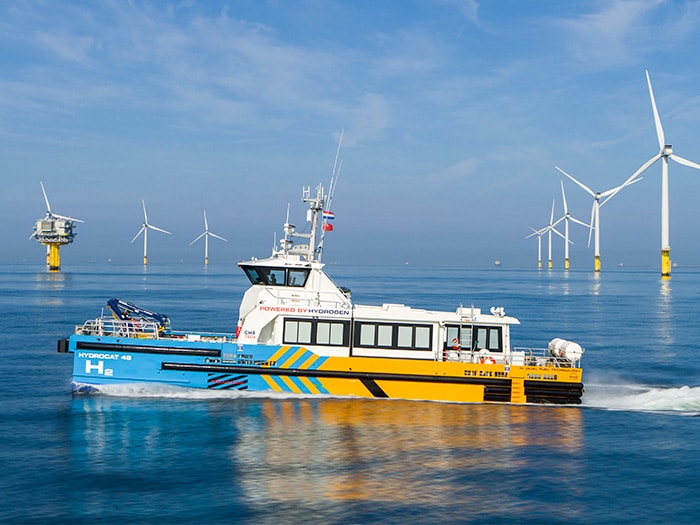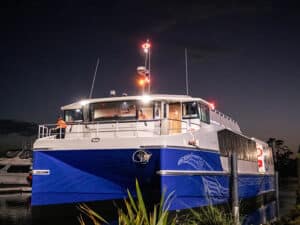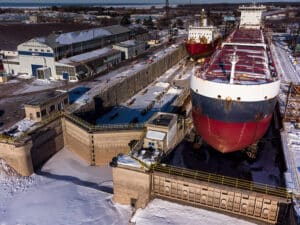
Windcat Workboats plans another 6 hydrogen-fueled CTVs
Written by Nick Blenkey
CTV Hydrocat 48 is first vessel powered by MAN hydrogen dual fuel V12 engines
Windcat Workboats and CMB Tech, both part of the CMB, have announced plan to order an additional six hydrogen-fueled crew transfer vessels (CTVs) by 2024. This follows the delivery of the Hydrocat 48, the world’s first hydrogen fueled CTV, back in June and trials with launching customer Vestas.
The Hydrocat 48 is not powered by a hydrogen fuel cell but by two twelve-cylinder MAN D2862 LE448, diesel engines, each with an output of 749 kW (1,019 hp) at 2,100 rpm.
The six additional hydrogen-powered vessels include four vessels of the same 25 meter long MK3.5H2 series as the Hydrocat 48, two of which will be delivered in 2022 and two in 2023. The next vessel which will be delivered in this series is intended for the German offshore wind market and will be operated by joint-venture partner FRS Windcat. The other two vessels will be of the new MK5 series, 27-meter vessels with double the hydrogen capacity of the MK3.5H2 series.
CMB Tech and Windcat Workboats are working together to further optimize engine capacities with the aim of increasing the percentage of hydrogen used in their dual fuel design. The long-term plan is to develop the technology and infrastructure to eventually enable a mono-fuel option through the internal combustion engine (ICE).
CMB Tech notes that the hydrogen supply chain is still in its infancy and will need to develop to a stage where it is readily available in more locations. The introduction of more hydrogen-powered vessels will increase the demand for hydrogen, which will facilitate the development of hydrogen infrastructure.
CMB Tech and Windcat have already developed solutions for delivering hydrogen to vessels. They include a 40 foot, 500 bar trailer capable of transporting hydrogen for remote refueling of all different applications currently in use. This enables hydrogen bunkering in various port locations that are a distance from the hydrogen source. Multiple applications and customers can be served by this one system, meaning the Hydrocat fleet has access to hydrogen bunkering.




